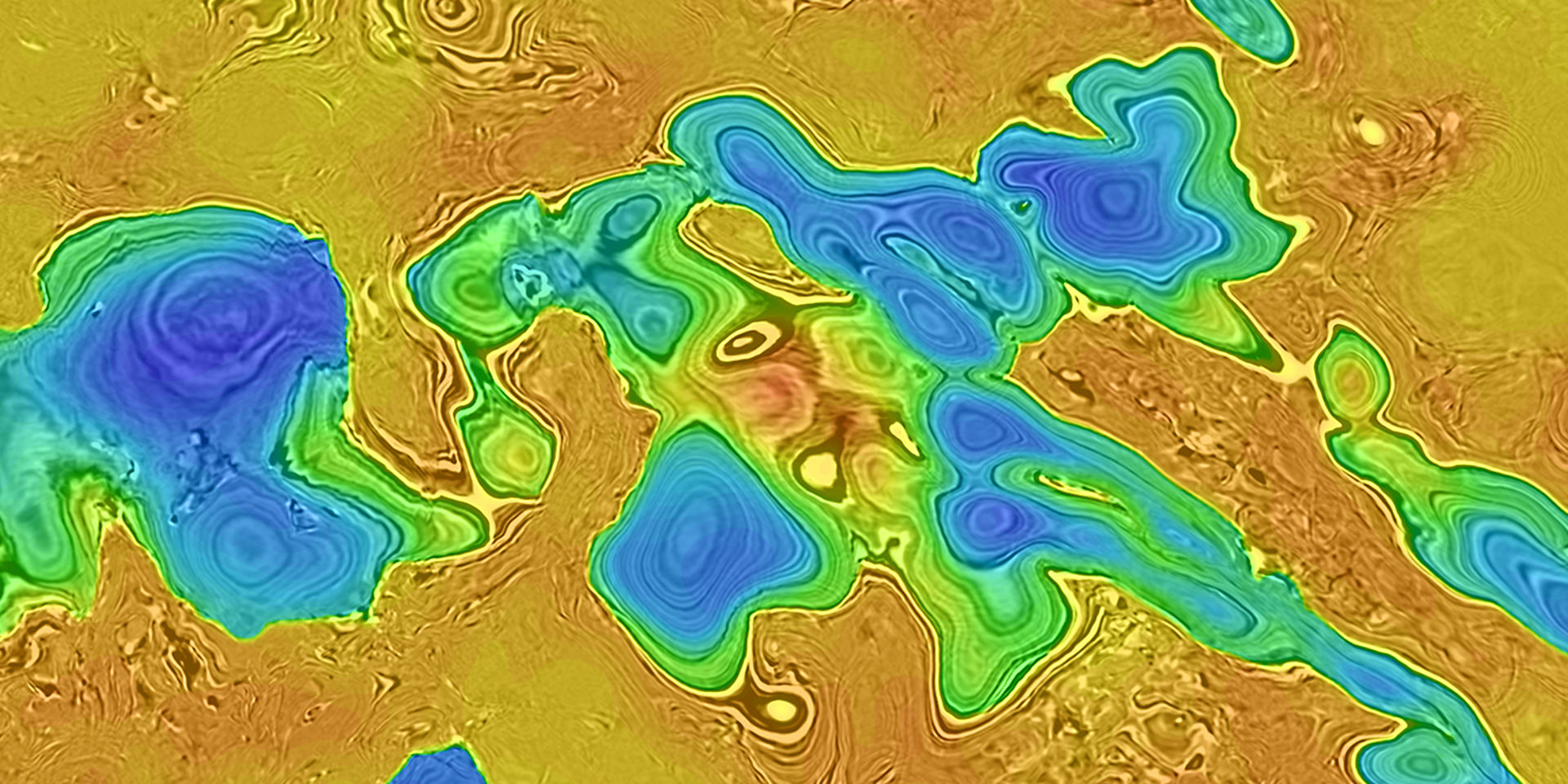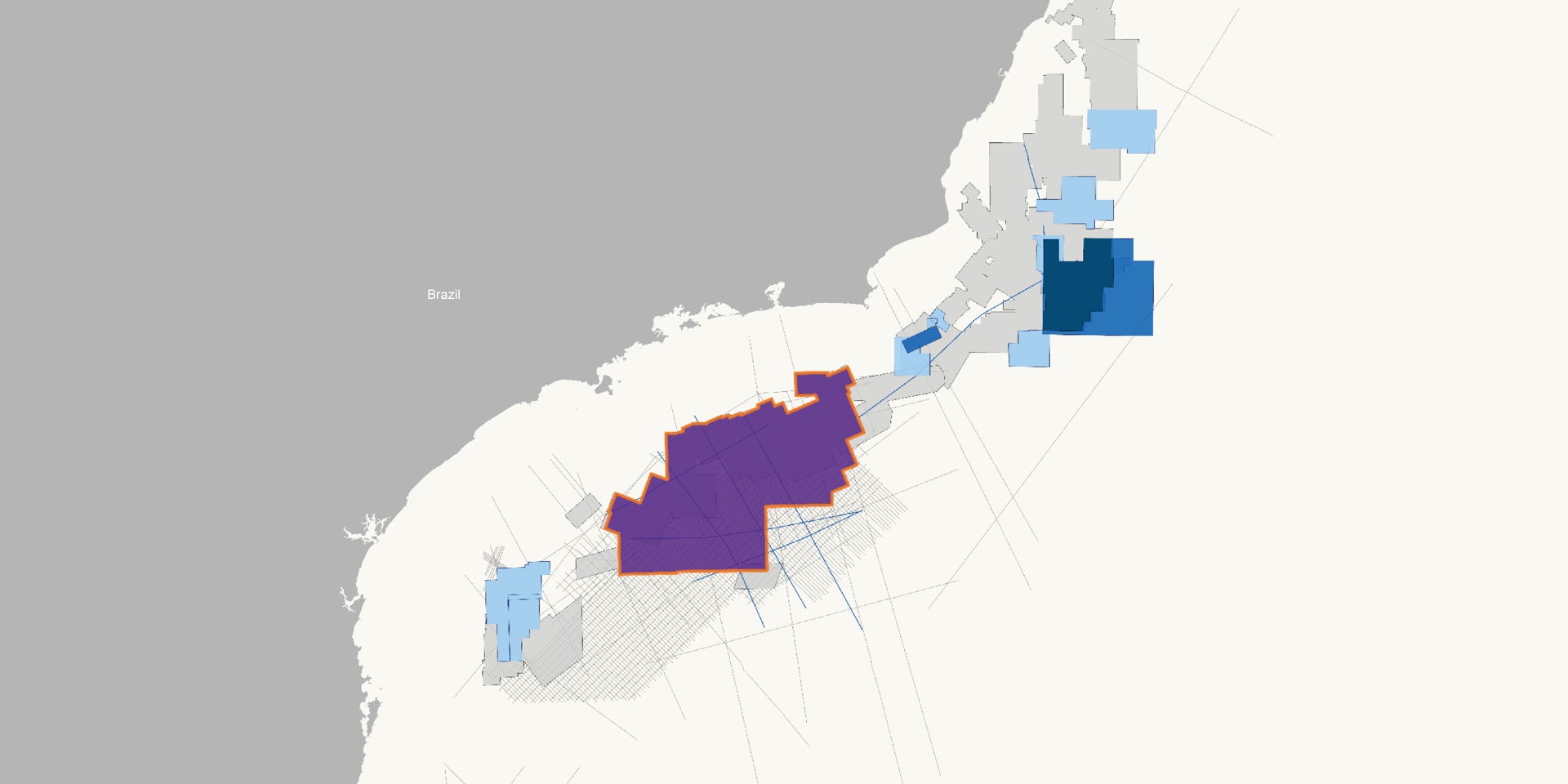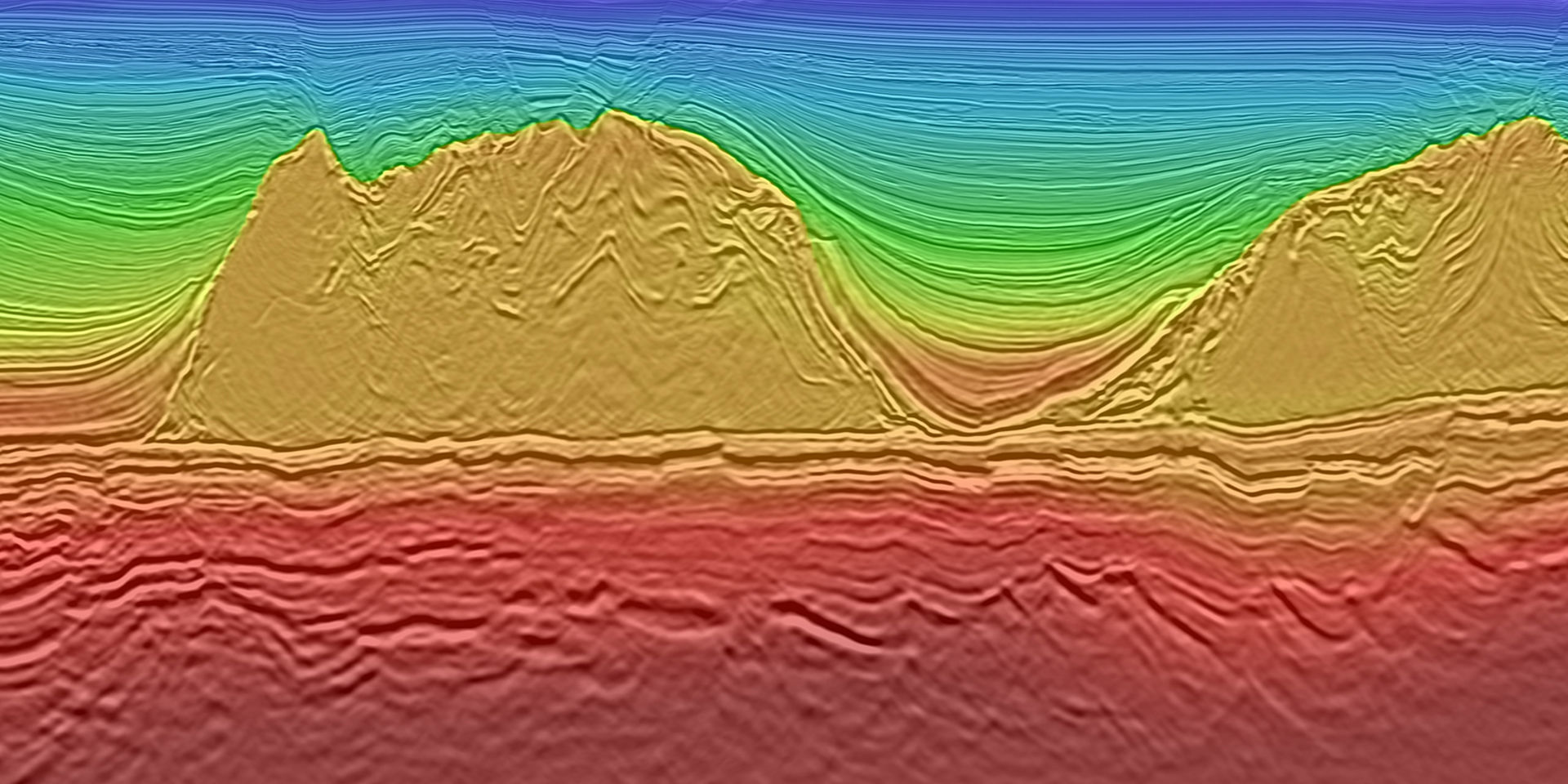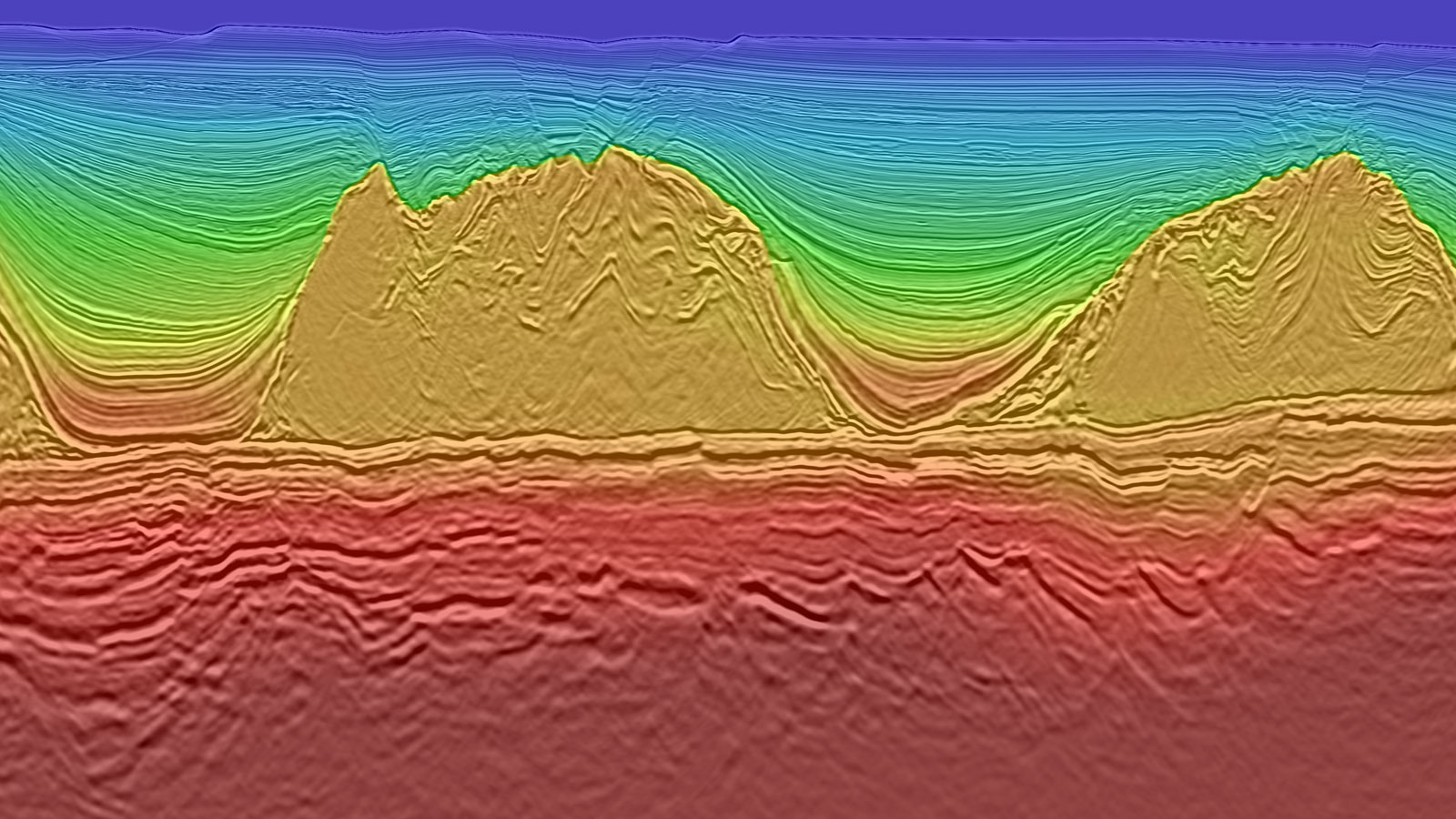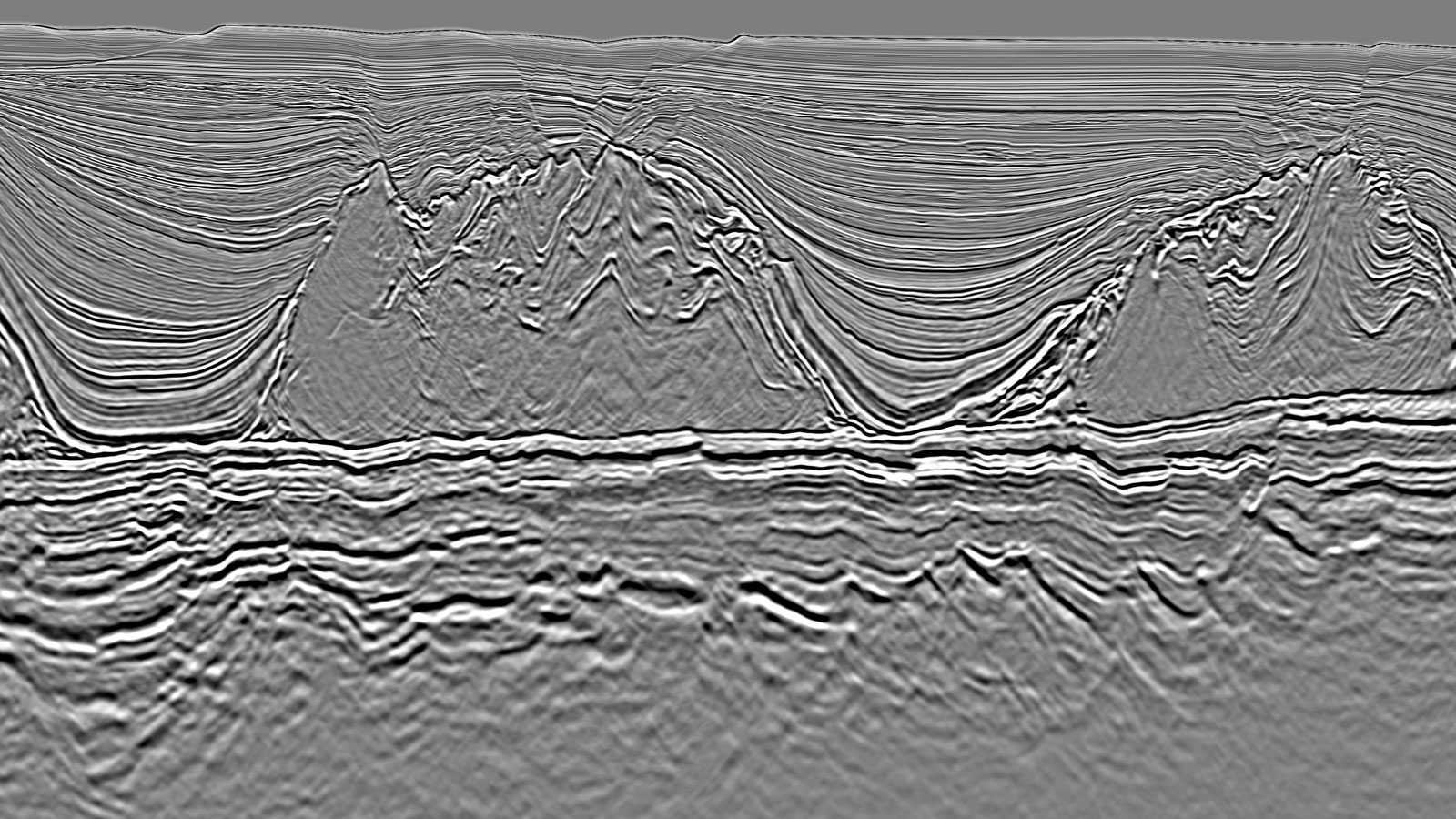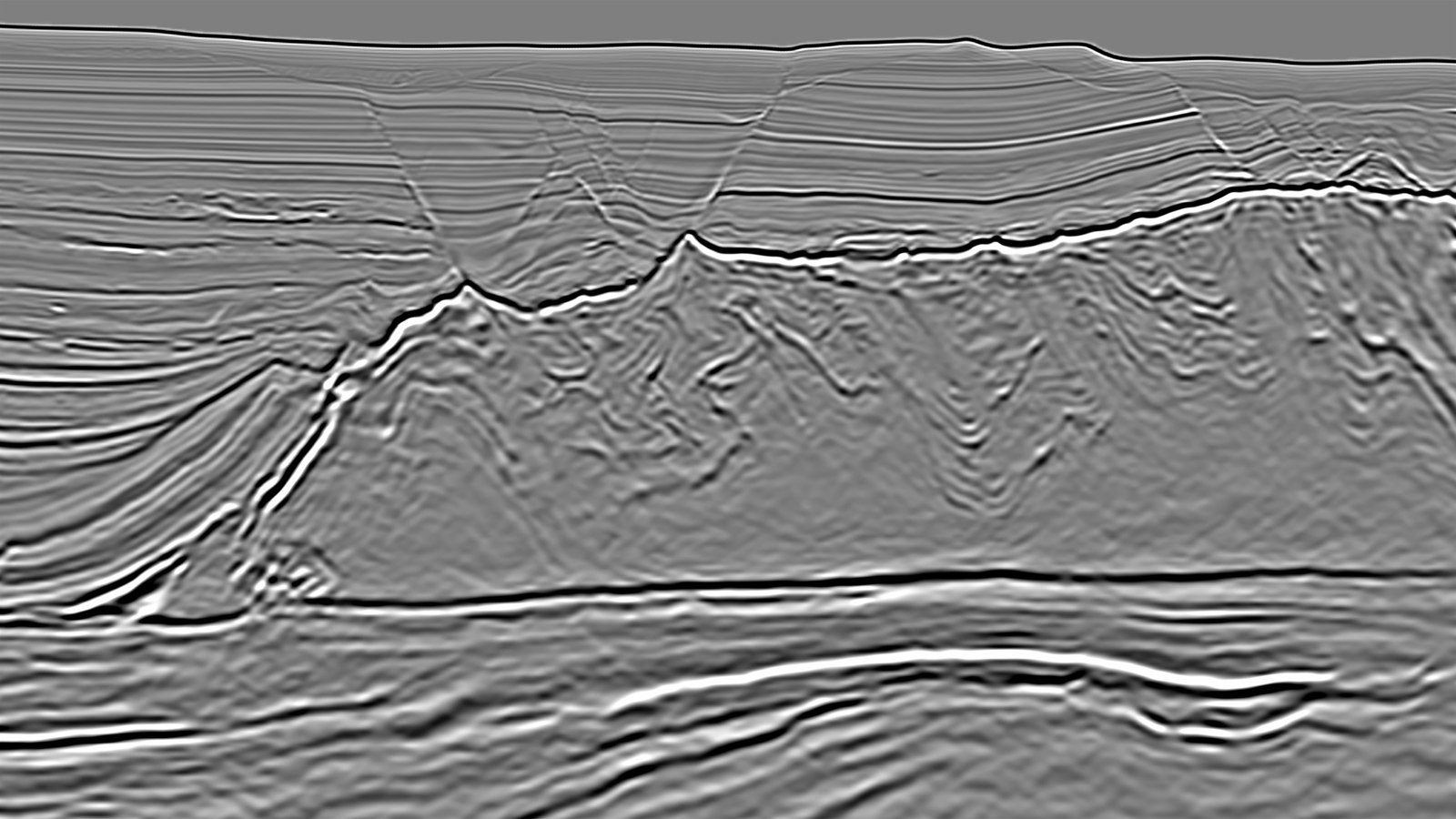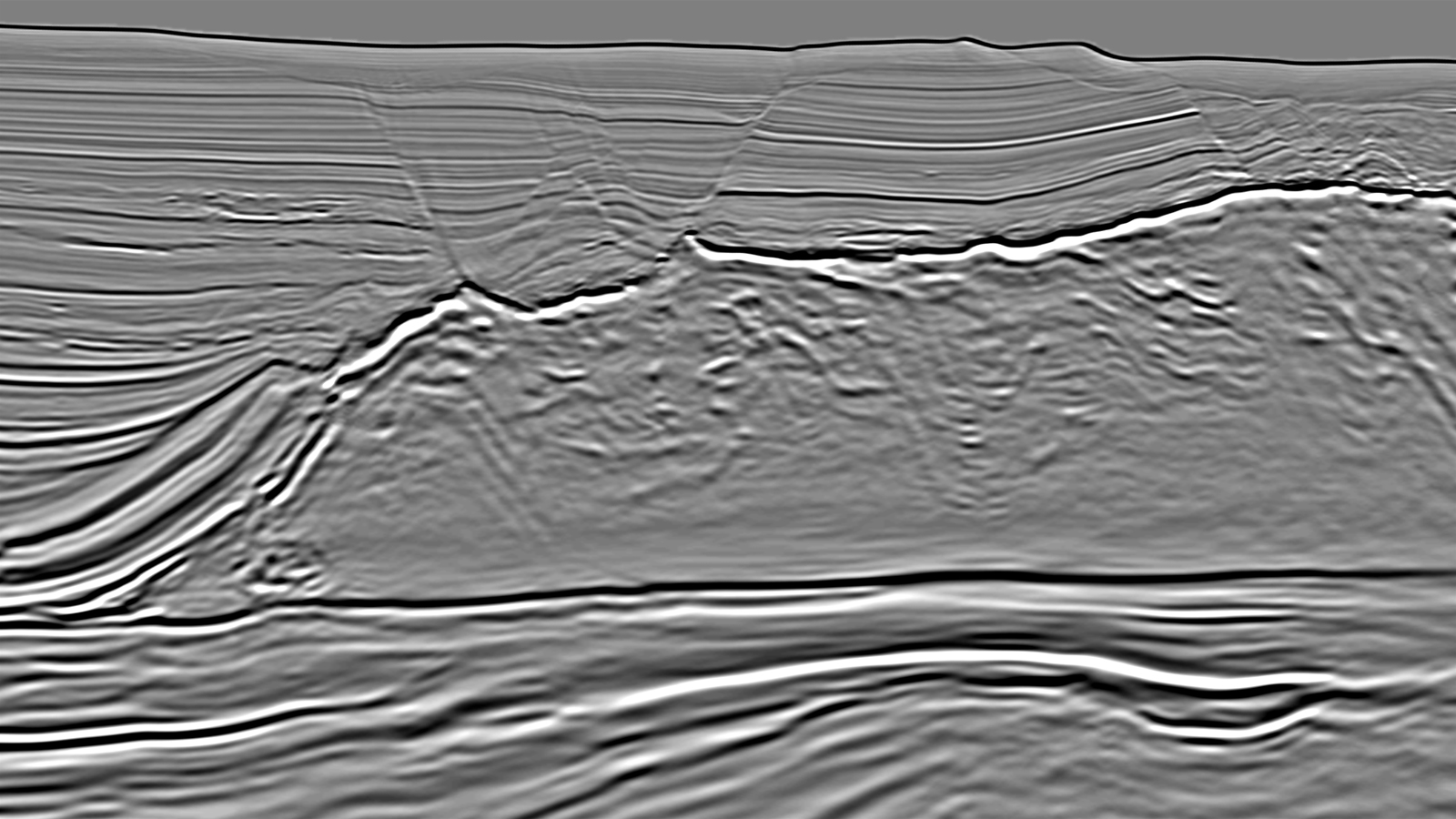Challenge
Reservoir targets in the Santos basin are localized in presalt carbonate build-ups underneath heterogeneously layered evaporite sequences and interbedded with volcanic rocks. On legacy data the presalt image is not well expressed, so the complexity of the salt and the differing character of the post-salt carbonates throughout the area needs to be understood and incorporated into the velocity model building process. The high degree of complexity within the salt, and the presence of areas with good reflectivity and others with little or no reflectivity must be accounted for in the modeling to obtain clear images.
